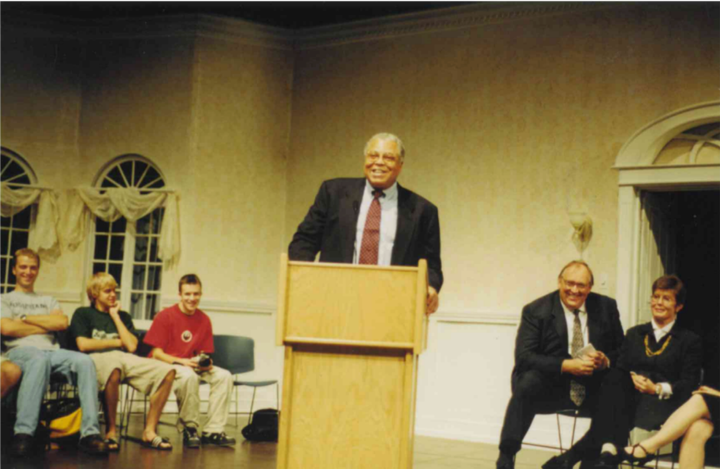FSC still working out classroom kinks

Froiland Science Complex experiencing
‘growing pains’
ERIN MAIROSE
Well into its second semester of operation, the Froiland Science Complex is experiencing what math professor Carl Olimb calls “growing pains” as students and faculty adjust to classrooms and technology.
During fall semester a fan in Olimb’s quantitative reasoning classroom was too loud to teach in, so he had to switch classrooms.
Fellow math professor Tim Sorenson moved his abstract algebra class of eight seniors to a smaller classroom after realizing the previous space wasn’t conducive to his small class.
“In every major, there’s a large group of students who want ownership in the class and belongingness,” Sorenson said. “And when you sit down with a professor you’ve known for years, and you sit in a class and you’re three feet apart working on a paper together, that’s different than me sitting in an auditorium with my seniors. Do you want to feel like a nobody, or like a somebody? The right size of a classroom creates the somebody.”
Sorenson said after the first semester of musical classrooms, his department had a better idea this spring semester: choose classrooms that best serve teaching methods and meet students’ preferences.
“The thing is, it takes time to learn that,” Sorenson said.
For Olimb, since math is primarily taught with “chalk and talk,” having the ability to incorporate technology and do more with hands-on learning has created outstanding resources.
Within the elementary education classroom, there’s an adjacent room for education tools next to a small roundtable classroom meant to facilitate discussion and inquiry-based education.
Other classrooms have movable tables, video screens or the traditional system layout that seats professor at the front with surrounding tables.
But besides the auditorium, there’s no elevated seating, something sophomore Sheila Holbrook was disappointed to discover.
Holbrook is not tall, and she realized after the first day of sitting in the back of her classrooms that she needed to move closer to the board to see over other students.
“In those elevated lecture halls, everything was close and rounded, and I really enjoyed that, just because I think it was more convenient for everybody,” she said.
Holbrook said she understands the idea that roundtables encourage discussion, but “I guess it would be nice to make sure that everybody can see, hear and understand what’s going on, as sometimes we have a lot to write and talk about, and in some of these rooms, it’s hard to lecture in.”
For senior Julie Behrens, getting the technology to work is sometimes a hit or miss, and she’s noticed a few ambiguities between classrooms—some have outlets in the floors, others on the wall.
The technology is also creating an opportunity for a different type of learning environment that Sorenson said, “is a new skill for both the professors and the students.”
Behrens’ take on the new building is one of “as long as things work that should work, I think we’re all happy with it,” she said.
And although the building was christened last fall, construction carries on.
Physics professor Eric Wells worked with a group of faculty and contractors, inspecting each room to make sure specifications are met. As of January, the list had about 400 items yet to complete.
The list, known as the “punch list,” includes anything from broken door handles to ventilation fans. A second inspection is planned over spring break to get an update.
“So it’s not finished in that sense, but I don’t know that you ever cross every single item off the punch list,” Wells said. “But it’s certainly a smaller list than it was a few weeks ago or a few months ago.”
With adjustments left to be made, students are still trying to find the best way to learn in roundtable rooms.
“I would say that the difficulties with technology or overcrowding are just minor to all the positives to having such a gorgeous science center,” sophomore Julia Johnson said.



